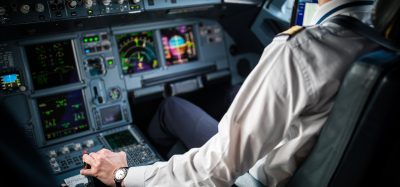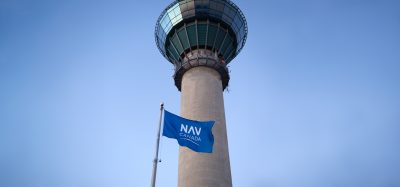Requirements for modern airport models
- Like
- Digg
- Del
- Tumblr
- VKontakte
- Buffer
- Love This
- Odnoklassniki
- Meneame
- Blogger
- Amazon
- Yahoo Mail
- Gmail
- AOL
- Newsvine
- HackerNews
- Evernote
- MySpace
- Mail.ru
- Viadeo
- Line
- Comments
- Yummly
- SMS
- Viber
- Telegram
- Subscribe
- Skype
- Facebook Messenger
- Kakao
- LiveJournal
- Yammer
- Edgar
- Fintel
- Mix
- Instapaper
- Copy Link
Posted: 17 November 2016 | Peter Eriksen (EUROCONTROL) | No comments yet
Senior ATM Consultant, Peter Eriksen, outlines the development of high fidelity airport models and the requirements for these models in order to make them valuable instruments in support of new infrastructure, procedural changes or implementation of new technology…


The first generation of ATC models
Research and development institutes have used mathematical models to describe and validate new air traffic management (ATM) concepts for more than 30 years. The models, initially built to understand airspace capacity, sectorisation, and controller workload, were also used in the airport environment. These initial airport models were simple two-dimensional representations of an airport with limited capabilities based on air traffic control (ATC) fast-time simulators, originally built for the enroute environment and the use was of limited value for the airport.
Emulation of airports
Requirements from ATM research combined with the desire of universities to develop and use models, facilitated by the never-ending increase in computing power, triggered the first simulators aimed at correctly emulating the airport. Airport ATC processes were thereafter correctly represented in the simulators and with more advanced aircraft models, the simulation quality had improved. In addition, the new generation of models also included a graphical presentation that evolved towards inclusion of buildings and infrastructure on the airfield, making it easy for everyone to understand what the model represented.
Requirements for modern models
Modern airport models, or simulators, are very powerful and have become valuable instruments for decision makers in the evaluation of operational or technical developments. The modern model must have the following:
- The ability to continuously increase and upscale computing power in order to simulate more complete and complex scenarios; cope with more operations – potentially in a multi-airport environment; and to handle what-if scenarios, while still keeping the time to run a simulation short
- The functionality to precisely emulate:
- TMA/TRACON traffic with continuous descent approaches and RNAV procedures
- Dynamic runway configuration and allocation including integrated arrival and departure sequencing and time based spacing
- Dynamic separation rules, for example to emulate new wake turbulence concepts
- Realistic runway occupancy times and ability to manage different aircraft acceleration and de-acceleration patterns
- Optimisation of gate and stand allocation, including dynamic taxi routing
- Advanced ATM/flow management/network capabilities and airport CDM processes with dynamically optimised or assigned push-back times when required
- Very complex airport processes with multiple actors, including the ability to include ground vehicle and passenger flows through the airport if required
- Powerful and easily modifiable graphical user interface providing a good visual representation of the simulation.
Building an airport simulation
Modern simulators are rule-based. In addition to constructing the physical layout, which does not change very often, the procedures or operational ‘rules’ are added to the model ‘layered on top’ of the physical layout. On top of this environment, the traffic programme is added. Rules can be conditional and can vary during a simulation run.


The rules will determine the following in the case of each aircraft:
- The use of correct taxiways
- Departure sequence position
- When to line up and take-off
- Which TMA departure fix separation to apply
Traffic data is basically what is in the airport operational plan: call signs, scheduled arrival or departure times, aircraft types, gate assignments, etc. The gate assignment can be rule-based: before landing the aircraft will look for a suitable available gate, and if no gate is available it will know which remote parking area to go to. If there is no available parking it will wait and block the taxiway, exactly as in real life. Departing aircraft may not leave on time due to another aircraft blocking the push-back, because of a departure queue at the runway, or because the connecting passengers were delayed on the inbound flight – all depending on the level of realism simulated and problem addressed.
Use of state-of-the-art models
Today many large airports use models to validate new development plans – from the conceptual idea to the detailed application – before entering into operations. Understanding the impact of changes – from building an additional runway down to a relatively simple shift in de-icing capacity between two remote platforms – becomes a lot easier when validated by a model. With the right key performance indicators (KPIs), the airport modelling expert will easily understand and document the impact on capacity, delay, taxi times, emissions and noise. Bottlenecks are revealed and alternative solutions can be sought before construction work is started, or new procedures implemented. The risk of making mistakes, forgetting something important or overlooking a new bottleneck is reduced when the plans have been validated by a high fidelity model and all experts have had the chance to study simulation results and visual representations of the new operation.
Using the model for communication
In addition to the specific validation simulations, where the experts mainly focus on data and compare the modelled performance through the defined KPIs, the high fidelity model with a good visual interface also becomes a powerful communication tool with non-experts. Managers, customers, airlines and even investors are often far better informed when looking at the dynamic visual representation of the airport model, rather than on a paper plan.
Best use of airport models
The current trend is for airport operators to maintain different versions of the airport – each version representing a particular year or step in the future development. This makes it easy to test the impact of changes, e.g. in traffic demand or fleet mix, validate additional new applications, not only in the current environment but also in future environments, and therefore enable an agile and dynamic approach to the airport development.
AirTOp simulations at Frankfurt Airport
Fraport is one of the airports using the AirTOp simulator to continuously simulate apron, runways and terminal airspace. The complete airport and terminal airspace environment has been built into an AirTOp model that is relatively easy to adapt in order to address particular problems. Future traffic programmes are well known. Permanent or temporary changes, or a combination of these, can be evaluated with very high accuracy. The ‘runway closure use case’ is a typical example of how AirTOp is used. The airport needs to close a part of Runway 18 for maintenance in 2017 and needs to know what the options are and the impact of each option in terms of capacity, cancellations and delays related to the cost of the maintenance work. Before deciding on the strategy, all possible scenarios are discussed and possible shortcomings identified. The most promising options are defined in detail and simulated using agreed KPIs. The heavy demand on the simulation team to conduct simulations shows how much importance Fraport places on this technology. Decisions involving changes to operations on the ground or in the air are only taken after evaluations by the simulator. The simulations are also used in discussions with the ATC service provider, giving the airport operator an in-depth understanding of the ATC aspects, including capacity and complexity issues. Airports are increasingly taking the simulation route, as Fraport has, in order to ensure the best basis for taking actions that affect capacity, delay and complexity.
Conclusion
As airport operations become more and more complex and integration with ATM and airlines increases, modelling is the best way to correctly evaluate future developments. Today’s airport models are strong and enable precise representations of future scenarios. In the future models will evolve to cater to a wide array of applications at future airports
Biography


Peter Eriksen has a background as Air Traffic Controller and worked for 15 years as ATCO in Copenhagen before joining EUROCONTROL in 1996. Following some years with development of the Airport CDM concept, Peter headed EUROCONTROL’s airport research programme for 10 years, leading the development of the Airport Operations Center (APOC) concept, optimisation of runway throughput, Wake Vortex separation, Surface Management (A-SMGCS) and integration of the European airports into the Air Traffic Management (ATM) network. Peter has been Chairman of several international Working Groups such as EUROCAE WG69 – Airport CDM and the EUROCONTROL Airport Operations Team. Peter is now working as independent consultant, specialised in implementation of new concepts with a focus on runway throughput. This includes new Wake Vortex applications, Time Based Separation and Performance Based Navigation.
















